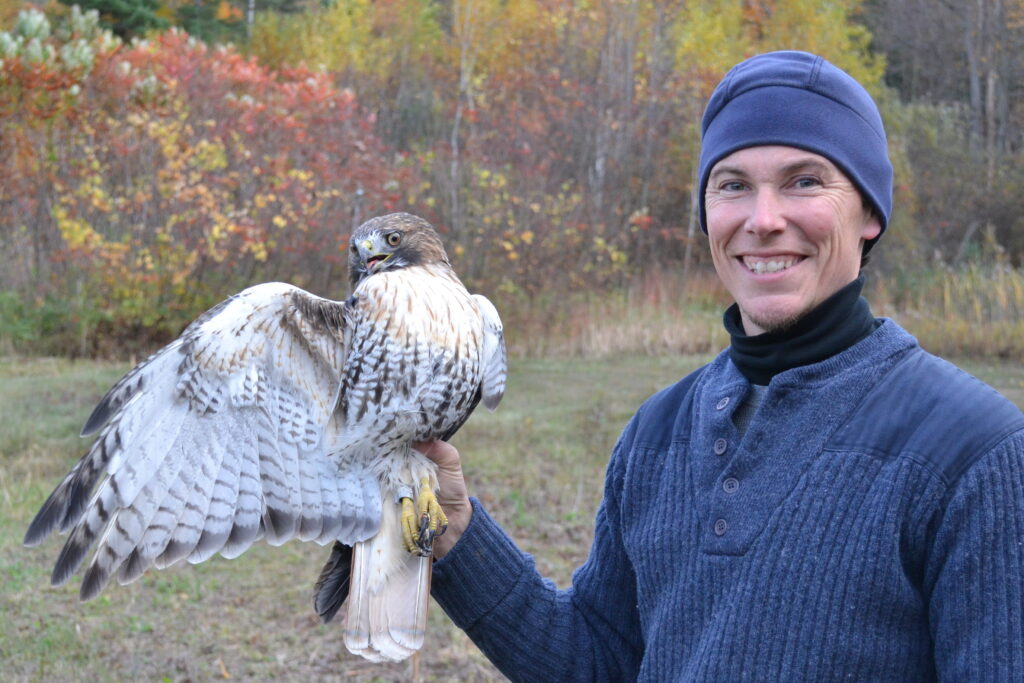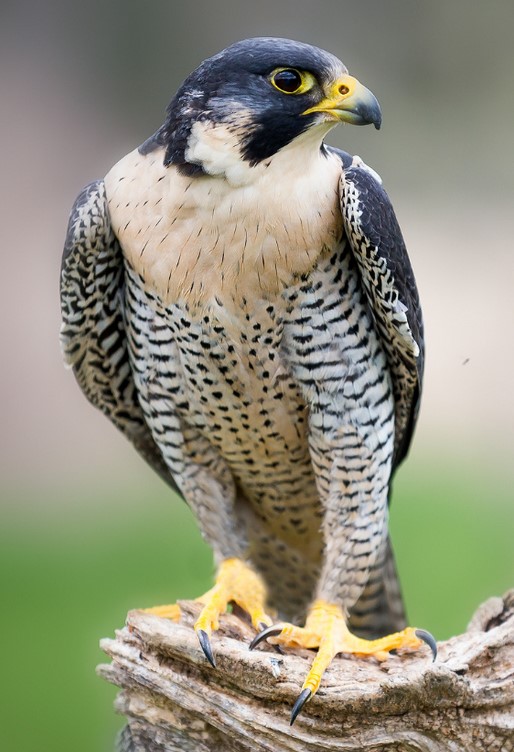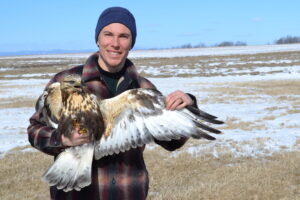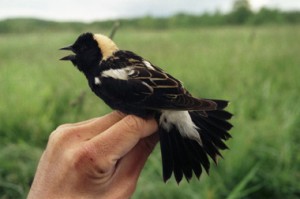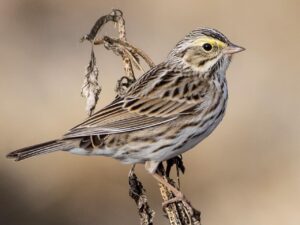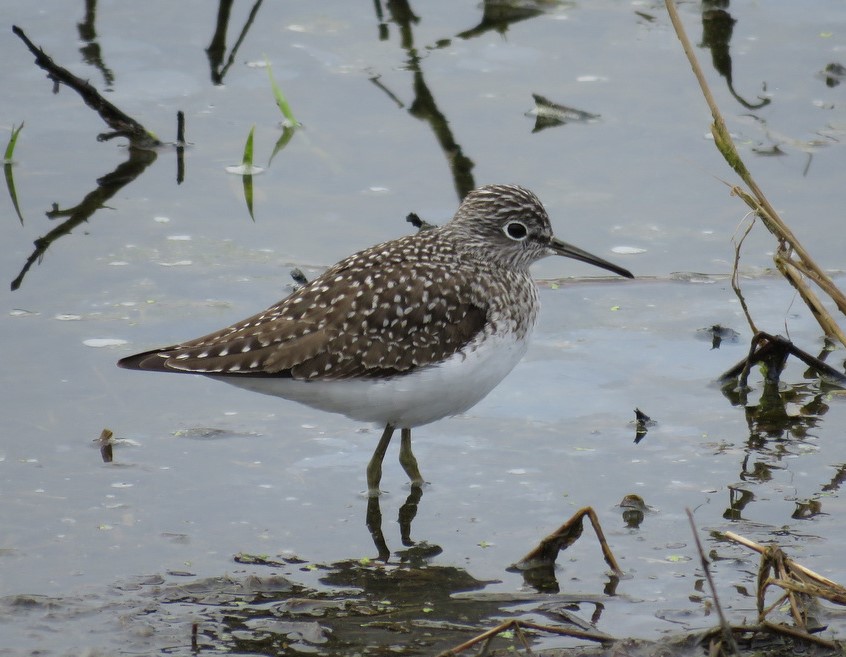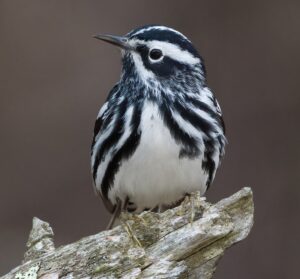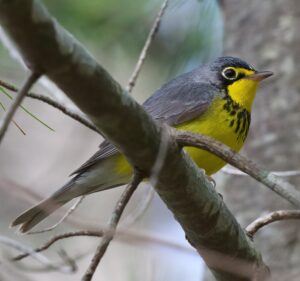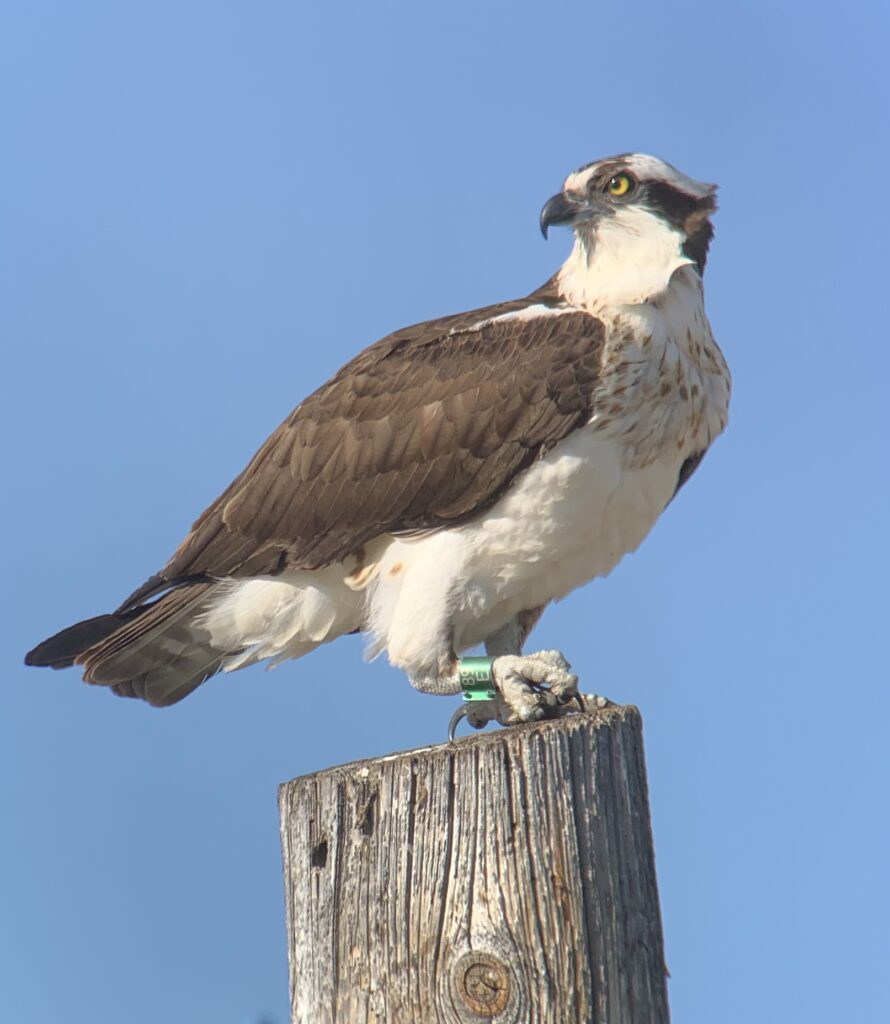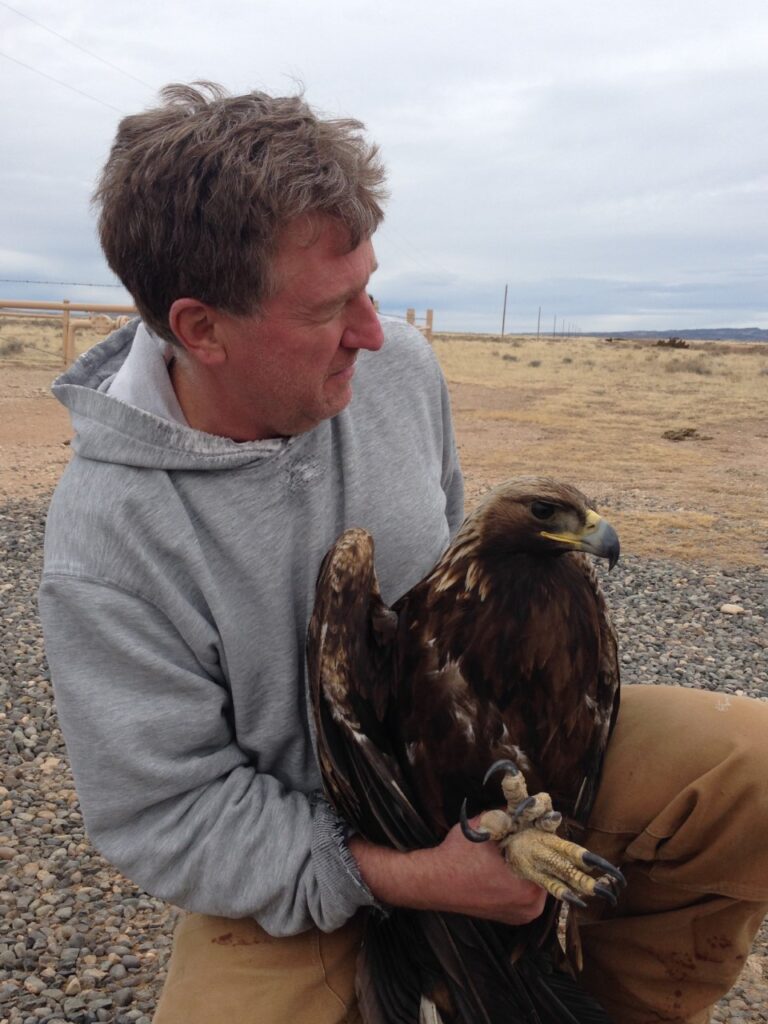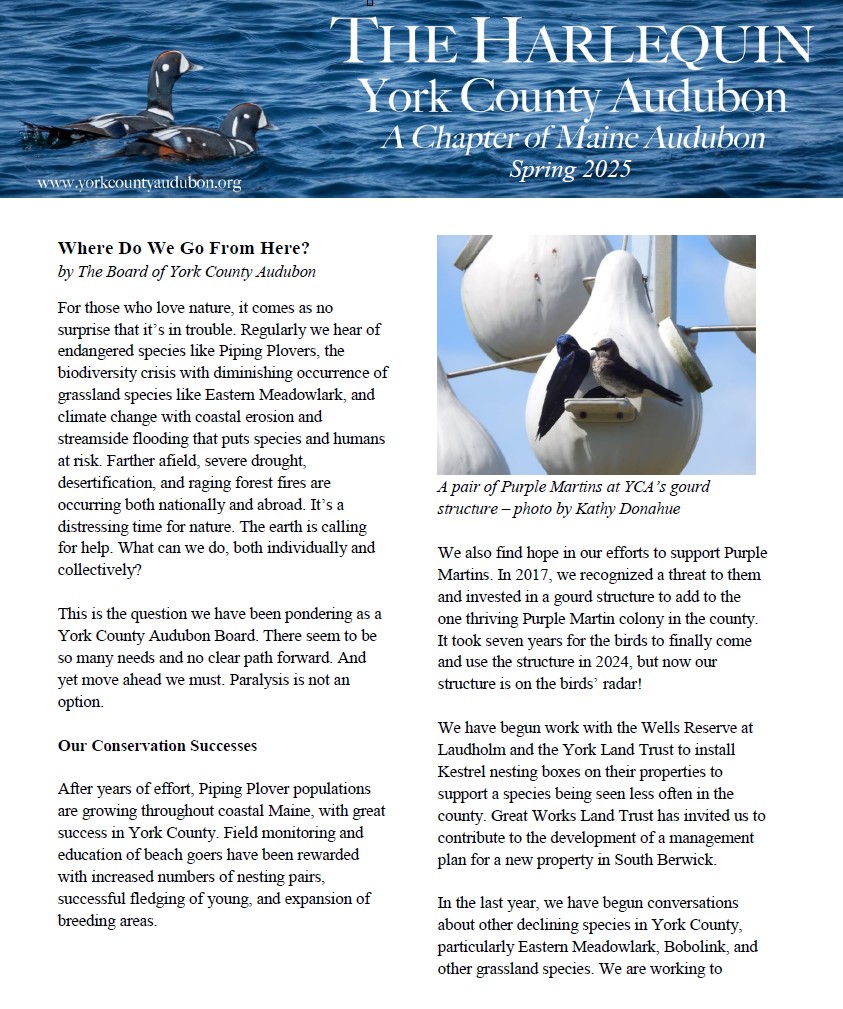
For many years, our former Board member, Marie Jordan, an avid birder and photographer, has produced a calendar and offered it for sale, graciously donating the calendars to YCA to support our educational programs. As many of our programs are now presented via Zoom, we’re making the calendars available by mail.
It’s a desk calendar in a 4” by 6” plastic case that opens into a stand to display each month. Each page features a great photo she took of a Maine bird. The cost is $10 plus mailing costs. They’re wonderful anywhere in the house, and also make great gifts! And York County Audubon tremendously appreciates your support for our programs.

To place an order, please make out a check payable to York County Audubon, write Calendar in the memo line, and mail it to Marie Jordan, 32 Crestview Drive, South Portland, ME 04106. Be sure to include the address or addresses that the calendar(s) should be sent to. If you have any questions, please feel free to contact Marie at wooddk5555@gmail.com.

Note that the calendars will be available November 1st.
The costs including postage and handling are:
1 calendar – $10 plus $7.00 postage and handling
2 calendars (mailed to one address) – $20 plus $8.50 postage and handling
3 calendars (mailed to one address) – $30 plus $12.50 postage and handling
4 calendars (mailed to one address) – $35 plus $12.50 postage and handling
(Note: these rates reflect the latest USPS increases.) Thank you!

